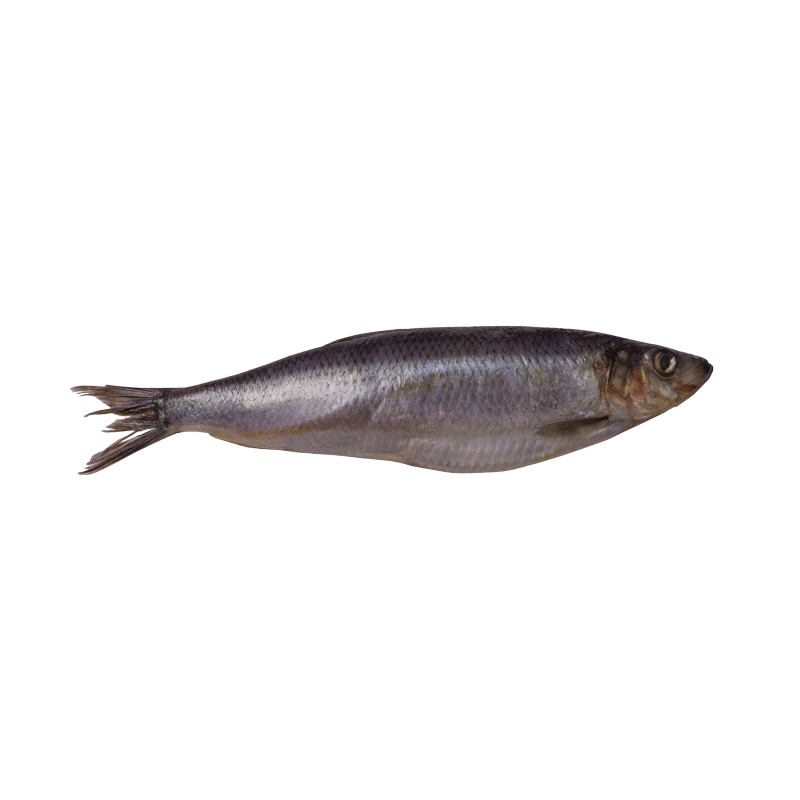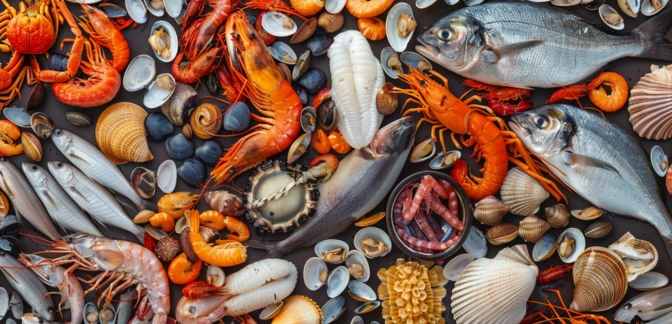Herring — Nutrients, Health Benefits, And Shopping Tips

Written by Listonic Team
Last update on September 4, 2024
Nutrition facts
Nutrition facts
Amount per 100 g
Calories
🔥 158 kcal
| Nutrition per: 100 g | Value | % Daily Value* |
|---|---|---|
| Carbs | 0 g | - |
| Fiber | 0 g | - |
| Sugars | 0 g | - |
| Glycemic Index | 0 | - |
| Protein | 18 g | 36% |
| Sodium | 87 mg | 3.78% |
| Total Fat | 9 g | 11.54% |
*The % of Daily Value (DV) tells you how much a nutrient in a serving of food contributes to a daily diet. 2,000 calories a day is used for general nutrition advice.
18 g
🧀 Good Protein Content
Did you know?
Health benefits
- High in protein, essential for muscle growth, repair, and overall body function.
- Rich in omega-3 fatty acids, which support heart health, reduce inflammation, and improve brain function.
- Contains essential vitamins and minerals such as Vitamin D, Vitamin B12, selenium, and phosphorus, which support overall health and well-being.
- Supports bone health due to its high content of Vitamin D and calcium.
- May improve heart health by lowering blood pressure and reducing the risk of cardiovascular disease.
Health risks
- Potential for mercury contamination though generally low, herring may still contain trace amounts of mercury, which can pose health risks if consumed in large quantities, especially for pregnant women and young children.
- High sodium content particularly in pickled or smoked herring, which can contribute to hypertension and increased cardiovascular risks.
- Risk of contamination with harmful bacteria or parasites, particularly in raw or undercooked herring, leading to potential foodborne illness.
- Environmental concerns related to overfishing or unsustainable fishing practices, which can impact marine ecosystems and species populations.
How to choose herring
Herring should have a shiny, silver exterior with a firm body. The skin should be tight and unbroken, covering moist flesh that springs back when pressed.
Avoid herring that smells overly fishy or has dull, dry skin. Fresh herring should have a clean, briny scent indicative of the sea and a flavor that is subtly sweet.

How to store herring
Fresh herring should be kept cold in the refrigerator. Store it in its original packaging or transfer it to an airtight container to keep it fresh. Using this method ensures that herring retains its quality.
Incorrect storage can lead to a strong, unpleasant odor. Avoid refreezing herring once thawed, as this can affect its texture. Maintaining proper refrigeration is key to keeping herring delicious and safe to eat.
✅ Extra Tip
How long does it last?
Herring can last for 1-2 days in the refrigerator when stored in an airtight container. For longer storage, herring can be frozen for up to 2-3 months. Proper packaging, such as vacuum-sealing, helps maintain its quality over longer storage periods.
What to do with leftovers?
Leftover herring can be used in a variety of savory dishes. Flake the fish and add it to salads, sandwiches, or wraps for a rich, briny flavor, or mix it into a pasta dish with a light cream or tomato sauce. Herring is also great in seafood spreads or dips, where it can be blended with cream cheese, sour cream, or mayonnaise.
Use herring as a topping for crackers or bread, paired with pickles, onions, and capers for a Scandinavian-inspired appetizer. If you have a lot of herring, consider making a batch of herring salad with potatoes, beets, and a tangy dressing, perfect for serving with rye bread. Herring can also be added to potato salads or mixed into a fish cake mixture with breadcrumbs and eggs, then fried until golden. For a quick snack, enjoy herring straight from the jar or can, paired with sliced cucumber or radishes.
👨⚕️️ Medical disclaimer
Discover products from other categories
Listonic Team
Fact-checked
Our editorial team checked this article to make sure it was accurate at the time of publishing it.
Get the top-rated shopping list app on your phone!







